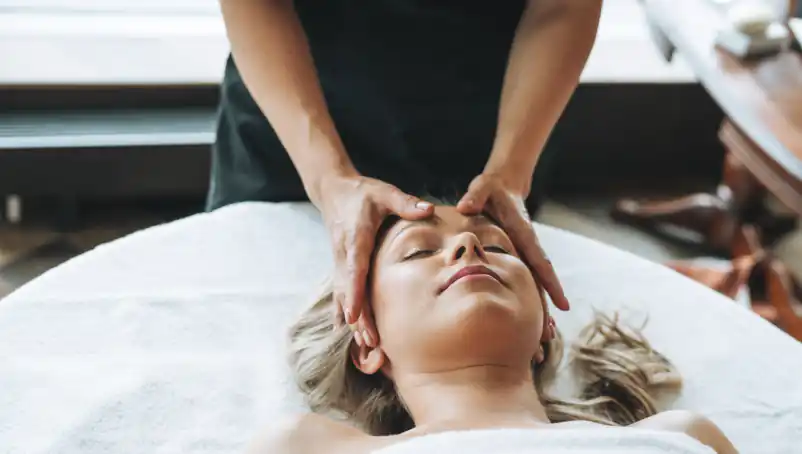Massage therapists feel called to help people. It’s a rewarding career. You’re giving a lot to your clients each day. The last thing you want to do is worry about starting and running a business.
The key to being able to focus on what matters most — delivering a great massage service — is running your business efficiently. We'll explain how to do that in our complete guide to starting a massage therapy business.
Step one: Get educated as a massage therapist
Not all states require a license to become a massage therapist — but most do. Licenses give your massage therapy business more legitimacy. You gain the trust of potential clients just from seeing that you are certified.
Read more: Can you practice massage without a license?
You can find training or certifications from major accreditation boards like the Commission on Massage Therapy Accreditation (COMTA) and the National Certification Board of Therapeutic Massage and Body Work (NCBTMB).
Read more: How to become a licensed and certified massage therapist
As you compare your training options, remember there is a difference between a certification and a license. Certification is recognition that you completed training; licensing comes from an official board (usually at the state level).
Read more: How to become a licensed massage therapist
Step two: Define your niche for your massage therapy business
You may want any customer in the early stages of your massage therapy business. That’s a valid feeling, but it may be hurting your business. Focusing on a few areas can help you understand what customers want and what you prefer doing.
Defining your niche as a massage therapist helps you to develop a specialty to serve your ideal customer better. Here are a few examples of niches as defined by NCBTM:
- Bodywork
- Chair massage
- Active isolate stretching
- Pediatric massage
- Geriatric massage
- Deep tissue massage
- Spa treatments
- Sports massage
- Reiki
- Orthopedic massage
- Hot and cold stone massage
- Therapeutic massage
- Manual lymph drainage
- Pregnancy massage
There are a variety of people who get massages, and a generalist may struggle to analyze the demand of the market. By choosing a niche, you can analyze the demographics of your customer and hone in on the exact types of services they want. This will help streamline your business and marketing plans.
Step three: Create a business plan for your massage therapy practice
All businesses need goals. Otherwise, you will have no way to measure success and might quickly grow discouraged by your new business progress. A business plan — either formal or informal — is a great way to establish these goals.
A business plan defines business objectives and describes goals. A business plan includes the following elements:
- Executive summary: A brief description of your business, including your services, how you provide them and your business goals.
- Company information: This includes the products and services you provide, information on key employees and you will also explain how you are bringing something unique to your market.
- Market analysis: Describe and analyze your client demographics, competition and your plan for differentiating to stand out.
- Marketing plans: Explain your plan for getting new massage clients by including a plan for marketing, advertising, promotions and pricing.
- Finances: Describe your cash flow, including revenue, expenses, assets and liabilities. Typically you should look at past financial records (if you have them) to create these projections.
Most banks and lenders require a formal business plan as a step in the loan application process.
Step four: Choose a location and gather materials
Your location and materials are a big part of your massage therapy start-up costs. First, you should weigh the pros and cons of your location:
- Home: You will likely see less added cost from having a home massage therapist business, so it’s a good way to keep your start-up costs low. But you may not be able to charge a premium compared to other locations because a home-based business will not feel as luxurious to clients.
- Rental space: This will be a more costly option, but you can bring a level of professionalism that builds legitimacy with clients. You don’t necessarily have to lease a full commercial space. . Many salons have suites that you can rent. So check with businesses in your area.
- Mobile massage therapy: This option brings added convenience and luxury to your clients (and you’re not responsible for the space). The downside of starting a mobile business is that you must have a reliable vehicle that can fit all of your supplies and account for travel time in your pricing.
Another high start-up cost comes from getting all of your materials together. A massage therapist typically needs a massage table or chair, linens, candles, ambiance supplies, cleaning materials and laundry services.
Read more: Buying the right equipment for your massage therapy business
Step five: Marketing your massage therapy business
Most business owners want to get clients ASAP, but can be overwhelmed by the myriad of marketing options out there. Keep it simple at first.
Online marketing
You should have a simple website and Google Business listing when you start a massage therapy practice. This gives potential customers a way to contact you, a place to collect online reviews and gives you legitimacy.
Then, consider creating a social media presence. Before investing all your time into making TikToks, consider where your customers spend time online. As a small business owner, your time is limited and valuable. Put your attention into a platform that has your customers’ attention (that could be TikTok, Facebook, Instagram, LinkedIn or something else).
Local marketing and referrals
Take a page from local medical practices and build up a referral network. For example, if your specialty is sports massage, you can get referrals from orthopedic doctors, physical therapists, coaches and personal trainers.
You can also offer free demonstrations at places where your client base spends their time. Partnerships and networking are a big piece of the local business marketing puzzle.
Step six: Set up finances
If you want to make money, you must create infrastructure to get paid. You must set up a bank account, accounting system and payment options for your massage therapy business.
Register your business and get an EIN
Registering a business helps to separate your personal and business finances. It’s also typical to obtain an EIN from the government at this stage. EIN stands for Employer Identification Number. An EIN helps to identify you to the government and is essential for taxes.
Open up a business bank account and set up a POS system
It’s a good idea to separate your personal and professional accounts. This helps protect you from future liability issues. While shopping around for a bank with your business, asking about any integrations they have with point of sale (POS) systems may be worthwhile. These are the systems like Square, Toast and PayPal that small businesses use to collect money.
Plan for taxes with deductions
Your taxes will be more costly the first time you do them as a small business owner. Plan for that by utilizing as many self-employed tax deductions as possible.
Set up an accounting system
The best way to make money in a small business is to understand where your money is coming from and where it is going. That’s where a solid accounting system comes in.
You can use accounting software, a spreadsheet or even a paper ledger. The key is to keep your books up-to-date and accurate. From there, you can evaluate your biggest expenses and areas that make the most money. You can zero in on what’s working and put effort into those areas.
Set price
Setting costs as a business owner is a complicated puzzle. You must examine operating costs, competition, customers and more. But understand, you can adjust your prices– nothing is set in stone.
But step one should be understanding your operating cost. How much does it cost to serve a customer? From there, try to set your prices to maximize profits. If your price is reasonable, you avoid having too few customers. But if your price is too low, you will make less per massage session. It’s a balancing act.
You can also try to sell in bulk to guarantee business. Packages and gift cards are good examples of how you can sell your services to ensure future business.
Step seven: Protect yourself and your massage business
There are some business and legal structures you should get in place before taking on your first clients:
Business license
A business license establishes your business with the government. This is also a good time to establish yourself as a sole proprietorship, partnership, LLC or corporation. Many small business owners start as an LLC or limited liability company. Because it separates your personal and business assets, this is a good safety net if your business gets sued or you must file for bankruptcy.
A small business attorney can help guide you through the process if you need an extra set of eyes.
Healthcare forms
Consider accepting insurance and taking a more medical approach to your practice. There are typically two items you need to consider from a healthcare perspective:
- Informed consent: Healthcare providers get a written agreement from their patients stating they can receive care. This is also a great opportunity to pull in a small business attorney into the mix when drafting this agreement.
- Health insurance eligibility: There are some forms you will need to use to establish insurance coverage. Check with major insurance providers about their processes.
Business insurance
Like any other small business owner or self-employed person, massage therapists face everyday risks such as slips and falls, damage to your equipment and accusations of making a professional mistake. In particular, you’re working with people each day in a way that could cause injury.
Business insurance can help protect you and your business from various risks. For example, general liability insurance for massage therapists helps cover non-employee physical injuries and property damage. Many property owners also require proof of general liability insurance if you lease a space.
Beyond general liability insurance, massage therapists may want to consider having these types of coverages depending on your situation:
- Professional Liability: This coverage can help defend you against accusations of making a mistake, whether it’s true or not.
- Workers’ Comp: While general liability covers non-employee injuries, workers’ comp can cover employee injuries and illness.
- Commercial Property: Property insurance can help with replacement or repair costs if your owned or leased property is damaged due to a covered event like a fire or burst water pipe.
- Commercial Auto: This coverage helps protect your business from unexpected expenses if you or your employees are involved in an accident using a business vehicle.
Read more: Types of massage therapist Insurance
NEXT helps massage therapists focus on their business (and worry less!)
NEXT specializes in insurance for spa and therapy businesses. You can get affordable massage therapist insurance customized for your business’s needs.
Because we’re 100% dedicated to small businesses, we know you don’t want to be worried about insurance and risk. So we make getting insurance affordable and managing insurance easier.
It only takes about 10 minutes to get a quote, review your coverage options, choose your policies and download a certificate of insurance.
Our team of licensed insurance advisors is standing by to assist you if you have any questions along the way.






